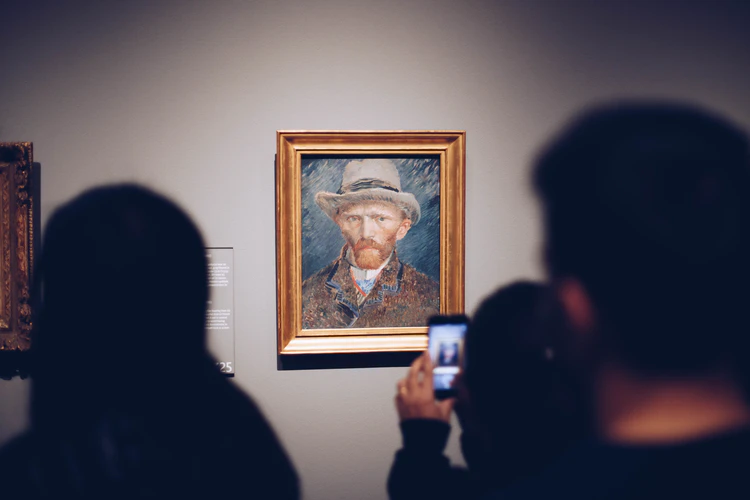 |
||||
|
A Student's Guide to Modern Art Styles
Whether you're studying Engineering, Communication or Fine Arts, it's always a nice thing to know your onions about different art styles. You'll be able to discuss not only your favorite painters, but the whole movement that they represent. Or even show off with your comprehensive knowledge in culture whenever such an opportunity presents itself. You might already have some favorite paintings. But do you have any clue about whether they belong to Realism, Impressionism or Suprematism? It's likely that you've heard these notions many times before, but haven't actually tried to puzzle out what is what. In this article, you'll learn about five modern art styles that every student should know about to keep up an intellectual conversation. Besides, it's a great opportunity to learn about those artists whose masterpieces have never caught your eye before. Who knows, perhaps you'll discover a painting that will serve as a new wallpaper on your smartphone. Romanticism Romanticism is a pioneer of modern art. This style emerged in the beginning of the 19th century as a response to the Enlightenment's enthusiasm for logic and order. Romanticism opposes the primacy of rationalism and focuses on emotion, imagination and individualism. One of the main characteristics of Romantic style is glorification of nature. Specifically, the fact that it can be mighty and unpredictable. Romantic painters, for example, J. M. W. Turner, referred to the dramatic visual image of a shipwreck. Also, they painted different natural disasters to prove the potency of nature. Portraits of Romanticism is another genre that illustrates individualism, irrationalism and emotionalism. That is, everything that this modern style is about. Romantic portraits depict people in different psychological states. Thus, emphasizing the differences in how people perceive the world and experience life. Realism This art movement began in the middle of the 19th century as a way to merge art and "real life." Realist painters aimed at replacing idealistic images of the previous art styles with real-life events. This way, they broadened the art itself as they focused on different marginal groups of society. These groups were never in the spotlight before. In this sense, Realism is considered to be the first nonconformist art movement. It depicted the ordinary life of ordinary people "in its true colors," that is, not trying to hide any unpleasant or even ugly features related to it. Gustave Courbet was one of the prominent representatives of this movement, famous for his honest and vibrant art works. Thus, one of the main characteristics of this modern art style is a complete refusal of any sort of embellishment. You might think about writing essays in the same way. Whenever you feel that you're letting your imagination run wild, you might need to rewrite your essay if you stray off topic. That is, real and honest depiction of a subject matter is the goal. Impressionism This movement is thought to be one of the most important ones in the history of modern painting. This style is not about depicting either idealistic or realistic images. Instead, Impressionists focused on putting on canvas their impressions of how a person, thing or landscape looked like. Though still trying to depict some sort of reality, Impressionist painters did it in their own way. That is, present images through their own lenses. The main characteristic of the style is the focus on changing light, which is often depicted with the help of subtle and bright brushstrokes. This way, Impressionists strived to capture the present moment and its brevity. The style originated in the last decades of the 19th century and at first, was disapproved for its perceived amateurishness. Gradually, Impressionism became renowned. Paul Cézanne, Claude Monet and Pierre-Auguste Renoir are some of the most prominent Impressionist painters. You can find their masterpieces in some of the best museums in the world. Post-Impressionism Post-Impressionism emerged when a change of heart happened in some Impressionists. They decided to concentrate on symbols, order and structure. As opposed to depicting impressions of natural landscapes. Paul Cezanne, Vincent van Gogh and Paul Gauguin all represent this modern art style. These painters challenged Impressionism. Specifically, its preoccupation with changing light. Instead, they opted for a more structured approach. That is, they aimed at bringing the sense of order back to their art works. In this sense, Post-Impressionist paintings seemed more solid. Post-Impressionists haven't rejected Impressionism completely. They cherished its approach toward depicting a subject matter in a free form. Yet, they strived to endow their pictures with some symbolic meaning, presented in a structured form.
Symbolism This movement emerged in the end of the 19th century. It was an opposition toward material and rational worldview that dominated the Western European culture at the time. Symbolist artists strived to create artwork that would celebrate ideas and emotions. They objected to depicting the world in a realistic and naturalistic manner. Symbolists were against Realism and Impressionism. They believed that artists should enrich their pictures with a symbolic meaning. Namely, by transmitting their feelings on canvas. And not trying to represent some sort of reality. That is, art is always subjective. George Frederic Watts was one of the most prominent representatives of the Symbolism movement. He said, "I paint ideas, not things." This expression is a great way to characterise this avant-garde artistic movement. Wrapping Up Whether you love art or feel mostly indifferent, it's still worth learning some basics. Such as modern art styles that emerged as a response toward different developments in culture and society. Romanticism, Realism and Impressionism are the pioneers of Modern Art. The Post-Impressionism and Symbolism artistic movements serve as a source of inspiration for those artistic trends that emerged during the 20th century. If you learn these basics, you'll be able to enjoy different artworks on a more sophisticated and comprehensive level. Thus, it's a great chance for you as a student to gain some sheer aesthetic pleasure that you can experience and talk about in a confident manner.
|
|
|||
|
|
||||
|
|
||||

